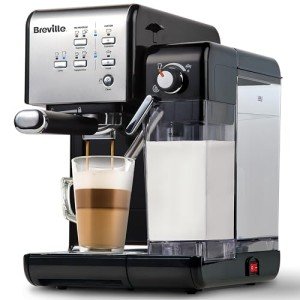The Art of Italian Espresso Machines: A Brewed Tradition
Italian espresso machines are not just home appliances; they are an integral part of Italy's abundant coffee culture, representing a blend of artistry, engineering, and design. Coffee fanatics around the world acknowledge the importance of high-quality espresso, a staple of Italian life and cuisine. This post checks out the history, mechanics, types, and elements to consider when purchasing an Italian espresso machine, reflecting the depth of this cherished beverage and its developing techniques.
History of Espresso Machines
The espresso machine's advancement go back to the early 20th century in Italy, where coffee was not simply a beverage but an essential social routine. The preliminary attempts to brew espresso started with simple, stove-top models, slowly developing into complex machines that might duplicate the perfect brew.
- 1901-- The First Espresso Machine: The very first steam-powered espresso machine, understood as the "Ideale," was developed by Luigi Bezzera. This equipment marked a turning point in espresso developing.
- 1938-- The Lever Machine: The intro of the lever machine made it simpler to control the pressure utilized in espresso extraction, improving taste consistency.
- 1947-- The Automatic Machine: Reaching more consumers, Gaggia introduced the first automatic espresso machine, more popularizing espresso bars.
- 2007-- The Digital Age: Technological improvements resulted in the birth of completely programmable machines, enabling users to customize their brewing settings to achieve an individualized coffee experience.
Secret Features of Italian Espresso Machines
Italian espresso machines embody accuracy, workmanship, and innovation. Here are some key parts that highlight their significance:
| Feature | Description |
|---|---|
| Boiler Type | Identifies how heat is generated and maintained. Espresso Machine Reviews include single boiler, dual boiler, and heat exchanger. |
| Group Heads | Where the coffee is brewed; commercial machines typically have several group heads for effectiveness. |
| Pressure Control | Crucial for attaining the ideal espresso; most machines run at 9 bars of pressure. |
| Frothing Capabilities | The steam wand enables for milk frothing, vital for beverages like cappuccino and latte. |
| Construct Quality | The products utilized (stainless-steel, brass, and so on) impact durability and heat retention. |
Kinds Of Italian Espresso Machines
Choosing the best machine hinges on user preferences, budget, and intended use. Below are the main types of Italian espresso machines:
Manual Espresso Machines
- Pros: Offer full control over the developing procedure, permitting a customized touch.
- Cons: Require ability and practice, can be labor-intensive.
Semi-Automatic Machines
- Pros: Provide a balance between automated and manual processes; users control water flow.
- Cons: Can have a steeper knowing curve than totally automatic machines.
Totally Automatic Machines
- Pros: Simplify the developing process with push-button operations; perfect for newbies.
- Cons: May sacrifice some of the subtleties of manual brewing.
Super-Automatic Machines
- Pros: Grind, tamp, brew, and froth instantly; practical for busy lifestyles.
- Cons: Less control over the developing variables, capacity for a less authentic espresso experience.
Buying Guide: Factors to Consider
Picking the ideal Italian espresso machine can be difficult, but considering the following aspects can simplify the decision-making process:
- Budget: Italian espresso machines vary from affordable to high-end designs, so set a budget upfront.
- Use Frequency: Evaluate how typically you will use the machine; daily users may desire a more durable option.
- Space: Measure your cooking area or counter space; some machines can be big and need adequate clearance.
- Upkeep: Consider ease of cleansing; machines with removable parts or integrated cleansing functions may reduce upkeep.
- User Skill Level: Beginners may choose fully or semi-automatic machines, while knowledgeable baristas can handle manual machines.
- Brand Reputation: Research brand names known for quality, such as Breville, Gaggia, and La Marzocco.
Popular Italian Espresso Machine Brands
Italian craftsmanship is renowned for producing a few of the very best espresso machines worldwide. Here are top brand names worth thinking about:
- Gaggia: Known for its home espresso machines and affordability.
- La Marzocco: A superior brand understood for its commercial-grade machines and innovative innovation.
- Rancilio: Renowned for its durable build and professional-quality machines suitable for home and commercial use.
- Sage/Breville: Offers advanced features and user-friendly designs, perfect for both amateurs and enthusiasts.
Frequently asked questions
What is the difference between espresso and routine coffee?
Espresso is a focused coffee brewed by forcing warm water through finely-ground coffee under pressure. It has a thicker consistency, richer flavor, and higher caffeine concentration than routine coffee.
Can I make milk-based beverages with an espresso machine?
Yes, many Italian espresso machines feature a steam wand to froth milk for drinks like coffees, lattes, and macchiatos.
How frequently should I clean my espresso machine?
Routine upkeep is important. Normally, a thorough cleaning is advised every couple of weeks, while descaling must be done every 1 to 3 months, depending on water hardness.
What is the ideal pressure for brewing espresso?
The ideal pressure for developing espresso is around 9 bars. This pressure guarantees the ideal extraction of flavors from the coffee premises.
Are more pricey machines worth the financial investment?
Higher-end machines often use better products and innovation, offering enhanced toughness and more consistent results. For major coffee fans, buying a great machine can elevate the espresso experience substantially.
Italian espresso machines are much more than simple developing devices; they are a celebration of a cultural tradition that has actually influenced coffee consumption worldwide. With different designs offered to fit any user's requirements-- varying from amateurs to seasoned baristas-- there is an Italian espresso machine perfectly suited for everybody. As you start your espresso journey, comprehending the history, mechanics, and options will enhance your experience and gratitude for this time-honored beverage. Whether you look for to recreate a coffee shop ambiance in your home or improve your developing technique, these machines are capable of delivering memorable cups of espresso decorated with the rich history of Italian coffee culture.

